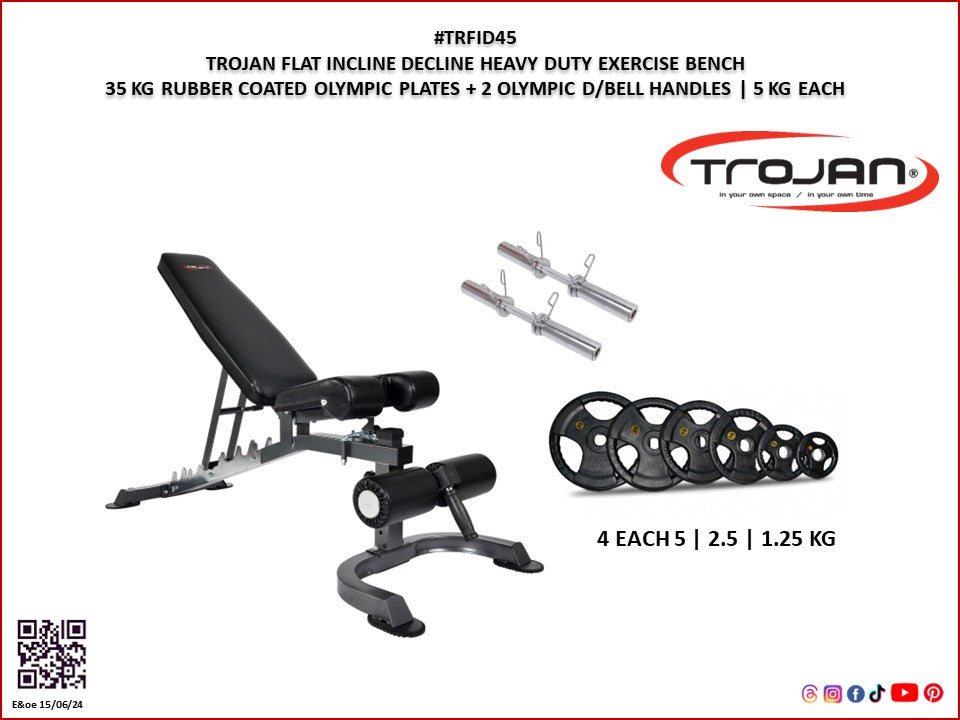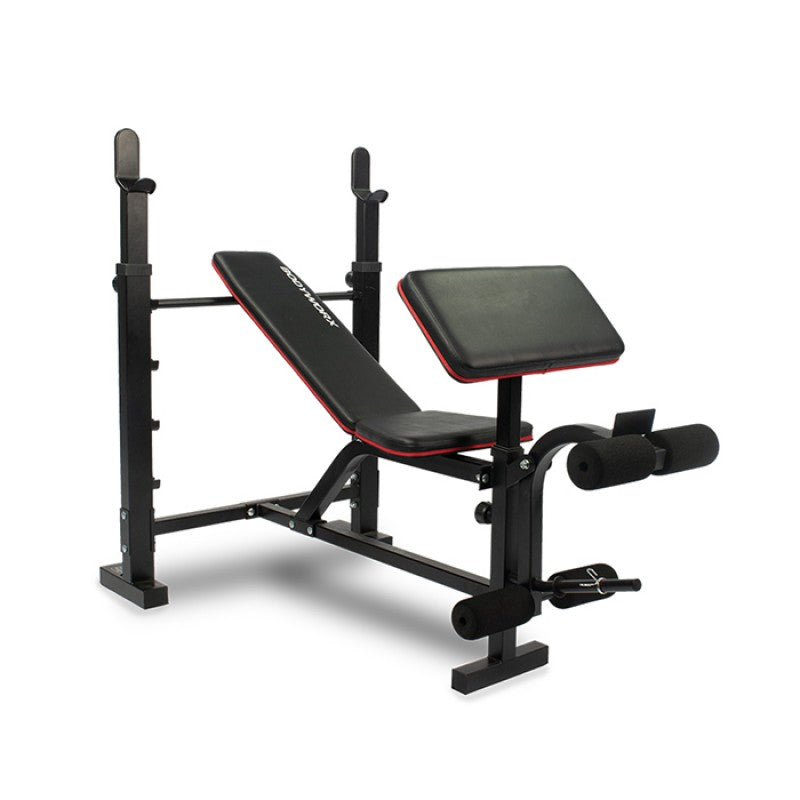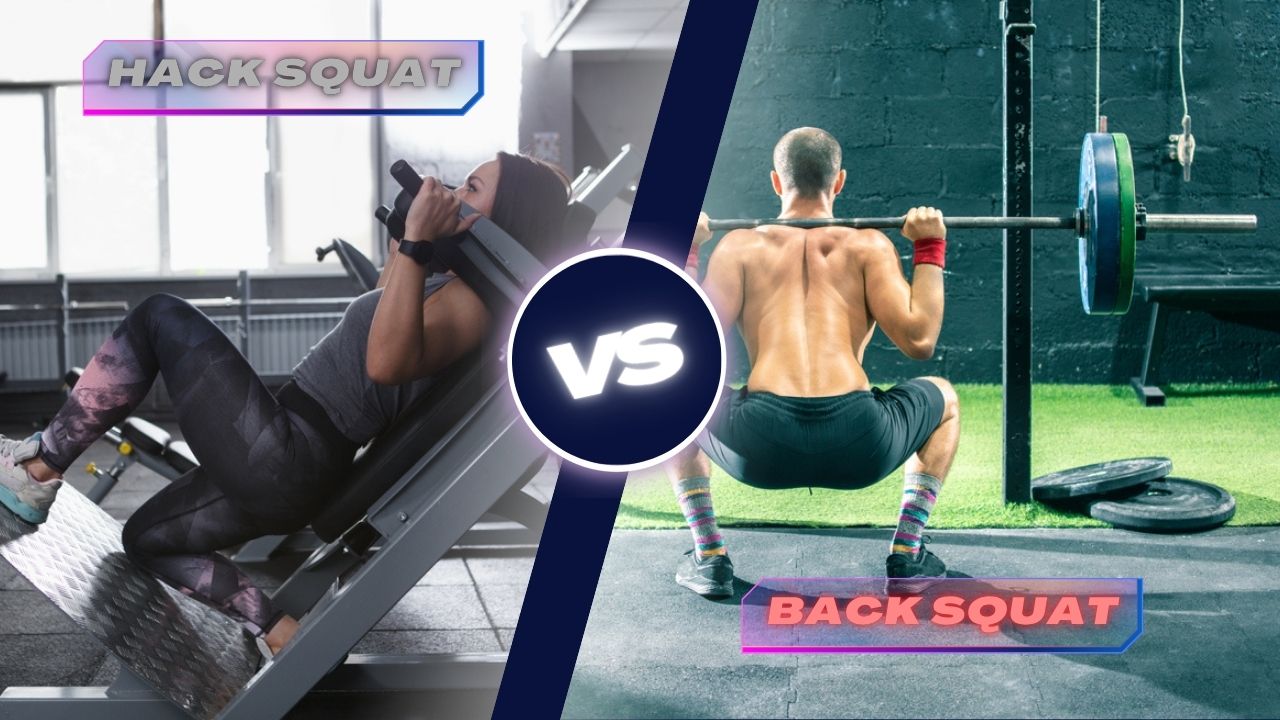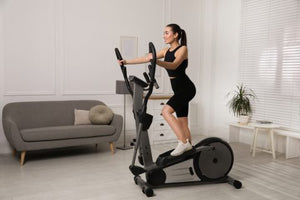Choosing between squat variations can be tough for any strength training fan. When it comes to leg day, many lifters debate on hack squat vs back squat. Some even ask what is a hack squat compared to the familiar back squat?
In other words, which exercise will build the most muscle and strength in your legs?
This guide explains everything. We’ll define the hack squat and the back squat, compare hack squat muscles worked, detail benefits, and cover safety and equipment needed. By the end, you’ll know whether a hack squat machine or a back squat is best for your goals.
Let’s get started.
Hack Squat | Definition and Form
A hack squat is a machine-based leg exercise where your upper body is supported while your legs do all the hard work, especially your quads.
In a hack squat, you stand on a slanted foot platform and rest your shoulders against padded supports attached to a sled. As you squat down, the sled moves along a set track (usually angled between 20° and 45°), guiding your movement. This fixed path helps you maintain form and focus the effort on your quadriceps.
Because the hack squat machine takes care of balance and direction, you can go heavier and deeper without worrying about stability. It’s kind of like a leg press. But it’s with your back upright instead of lying down. That added support makes it easier on your spine while giving your quads a serious workout. One of the biggest hack squat benefits is that it lets you isolate the front of your thighs with less stress on your back.
Back Squat | Definition and Form
A back squat is a free-weight barbell exercise where the bar sits across your upper back while you perform a deep squat using your full body.
To do a back squat, you unrack a loaded barbell (usually from a power rack or squat rack). Then you place it across your traps or upper shoulders and squat down by pushing your hips back and bending your knees. Then you stand back up with control. Since there’s no machine guiding you, your body has to stabilise the weight on its own.
This means your core, lower back, hips, and legs all work together to control the movement. While the quads are still heavily activated, the glutes, hamstrings, and even spinal muscles are more involved compared to a hack squat. That’s why the back squat is considered a full-body strength move. It challenges coordination, balance, and mobility all at once.
Now that we’ve defined both movements, let’s look at how they target different muscles.
Hack Squat vs Back Squat | Muscles Worked Compared
The two exercises both train your legs, but in different ways:
-
Hack Squat Muscles Worked
A hack squat mainly targets your quadriceps.
Because your body is tilted back and supported, the quads do most of the work. Your hamstrings and glutes still contribute (they help extend the hip and knee as you stand), and your calves stabilise at the bottom of the squat. In short, hack squats are quad-dominant; great for building thigh muscle but less so for the glutes/hamstrings.
-
Back Squat Muscles Worked
The back squat also targets the quads, but less isolation.
It engages a broader lower-body chain. Your glutes and hamstrings work hard on the way up (hip extension), and your core and spinal muscles fire to hold your torso upright. In fact, studies show back squats activate the core more than planks at similar loads. This balanced muscle recruitment makes back squats excellent for overall leg development.
Now let’s break down the benefits of hack squats and back squats so you can choose what suits your goals.
Benefits of the Hack Squat
1. Intense Quad Hypertrophy (Muscle Growth):
Because a hack squat isolates the quads, one major hack squat benefit is enhanced thigh muscle growth.
You can really burn out your quadriceps without the weak link of other muscle groups. Bodybuilders and lifters who want thick quads often use hack squats for this reason.
2. Safety & Stability:
The machine’s guided path provides stability.
Hack squats typically have built-in safety catches or locking pins, so you can train close to failure without worrying about the barbell dropping on you. Your spine is also supported by the back pad, so there’s much less lower-back stress than with free squats.
If you have back issues, hack squats let you work legs while protecting your spine.
3. Heavier Loading:
Because the track supports the motion, lifters can often load more hack squat weight than they could handle on a free squat. In practice, 200 lbs. on the hack squat machine feels lighter than 200 on a barbell.
For instance, Trojan Fitness’s LPHS-900X Hack Squat Leg Press supports up to 1000 lbs. of weight. You can use this to progressively overload your quads.
4. Beginner-Friendly:
Hack squats have a shorter learning curve. The fixed movement helps beginners maintain proper form. Many trainers note that people new to squatting find the hack squat machine easier and less intimidating. It’s also quicker to set up than racking a barbell.
5. Reduced Recovery Time:
Because hack squats focus on fewer muscles, they tend to be less fatiguing overall. You can perform hack squats more frequently or do higher-rep sets without as much soreness.
While hack squats stand out for isolation, back squats are unbeatable for total strength. Here's why.
Benefits of the Back Squat
1. Total Lower-Body Strength:
The back squat is legendary for building overall leg power. It trains both quadriceps and the posterior chain (glutes/hamstrings) together, plus your core. This makes it one of the most effective exercises for total leg strength and muscle mass.
2. Core and Stability:
Because you must balance the bar, back squats force you to support your core. Studies confirm back squats activate the trunk muscles far more than hack squats. Over time this builds core strength that carries over to other lifts and daily activities.
3. Functional and Athletic Heritage:
A back squat mimics real-life movements (like standing up from a chair), so the strength gains transfer well to sports and daily tasks. It’s a staple in powerlifting and other sports for good reason.
4. Versatile Setup:
You can easily change stance width and squat depth with a barbell. For example, a wider stance shifts emphasis to the hips, while a narrow stance hits the quads slightly more. Also, performing squats with a barbell means you only need minimal equipment (a rack and plates) to get started. No specialised machine required.
5. Higher Overall Muscle Engagement:
Since your body is free to move, many stabiliser muscles engage along with the prime movers. This means a back squat can give you better all-around muscle development in the legs and core.
Strength and hypertrophy are great—but safety matters too. Let's explore injury risks.
Squats vs Hack Squats | Safety, Recovery & Injury Risk
When choosing between hack squats and back squats, it's important to consider how each affects your joints, spine, and overall safety. Here’s how the two compare when it comes to injury risk and recovery.
-
Spine & Core Load
In a back squat, your spine bears significant load. Poor form (like rounded back) can risk injury. In fact, back squats place more stress on the spine, which can be problematic if you have back pain.
By contrast, a hack squat machine removes the need to balance the barbell. Your back is pressed into a pad, so spinal loading is nearly eliminated. This makes hack squats much safer for the lower back.
-
Knee Strain
A downside of hack squats is knee stress. The fixed angle and forward knee tracking mean your knees do almost all the work at the bottom. Your knees end up doing the vast majority of the work in a hack squat, and the near-sit position can put a lot of pressure on the knee joints.
Back squats also load the knees, but they allow more hip flexion, which can distribute stress more evenly across hips and knees.
-
Stability & Range of Motion
Because hack squats lock you onto a fixed path, there’s virtually no side-to-side sway. This reduces the chance of form breakdown.
In contrast, back squats allow you to move naturally. You can adjust angle and depth for your comfort. That flexibility is great for tailoring form, but it means you must stabilise the barbell.
-
Built-in Safety
Most hack squat machines have safety catches or locks, so even if you fail a rep, the machine can’t topple over.
Back squats have no such built-in fail-safes. If you get stuck, you need safety pins or a spotter. This is why beginners mostly favour machine squats initially.
Now let’s look at the equipment differences between machine and barbell squats.
Hack Squat vs Back Squat Equipment | What Do You Need to Train?
Hack squats require a specialised machine; e.g. a 45° sled with shoulder pads. Trojan Fitness stocks several squat machine types, including heavy-duty 45° Leg Press/Hack Squat combos.
Whereas, free-weight back squats need a solid power rack or squat cage plus barbell and plates.
Most commercial and home gyms can accommodate barbell squats easily. We also offer power rack packages and squat racks to make it simple to set up a safe squat station.
Hack Squat vs Back Squat: Quick Comparison
|
Feature |
Hack Squat |
Back Squat |
|
Equipment |
Angled sled machine with shoulder pads |
Barbell + squat/power rack |
|
Primary Muscles |
Quadriceps-focused |
Quads, plus glutes & hamstrings (full lower body) |
|
Core Engagement |
Low |
High |
|
Load & Intensity |
Can handle very heavy loads |
Generally, lighter loads |
|
Safety |
Built-in locks and fixed path |
Riskier without safety pins/spotter |
|
Learning Curve |
Easier; Ideal for beginners |
Harder; Needs technique & stability |
|
Muscle Focus |
Isolates quads for hypertrophy |
Builds balanced legs (quads + glutes/hamstrings) |
|
Versatility |
Locked path limits stance adjustments |
Adjustable stance and depth for different targets |
So, which one should you choose? Let’s match each movement to your fitness level and goal.
Which Squat Is Best? | Choosing Based on Your Fitness Goals
- Beginners – Start with the hack squat to build confidence and form.
- Hypertrophy (Muscle Size) – Use hack squats for quad isolation; add back squats for glute/hamstring growth.
- Strength & Performance – The back squat is king for total strength and athletic carryover.
- Special Cases – Have back issues? Use a hack squat machine. Knee pain? Stick with lighter barbell squats and build up.
Conclusion: Which Squat is Right for You?
In reality, the best squat depends on your goals and equipment.
Hack squats excel at building quad size and letting you lift heavy safely on a machine. Back squats offer unmatched full-body strength and core development. Most trainers recommend using both: include back squats for strength and function, and add hack squats to blast the quads.
Ready to squat like a pro & crush your leg day?
Trojan Fitness Has Every Equipment A Weightlifter Needs to Build Stronger Legs
From rugged power rack packages for barbell squats to versatile leg press hack squat machines, we stock fitness equipment for any home gym or commercial setup.
Get Leg Strength Today – Don’t let indecision stall your gains.
Whether you train in Perth or at home in WA, Trojan Fitness delivers top-quality squat gear nationwide. Our experts are ready to help you compare squat machines and start crushing leg day.
Browse our squat racks, hack squat machines, and more.
Shop Strength Training Equipment Now
Still unsure which squat builds stringer legs faster? Ask our team at Trojan Fitness Perth for a free consultation or demo.
Disclaimer:
The information provided on this website is intended for general informational purposes only and should not be considered professional or medical advice. We make every effort to ensure the information provided is accurate and up-to-date, but we cannot guarantee the accuracy, completeness, or timeliness of the information. Any reliance you place on such information is strictly at your own risk. Always consult a qualified professional before making any significant changes to your diet, exercise routine, or lifestyle. We are not responsible for any adverse consequences resulting from the use of, or reliance on, any information provided on this website.
 All Payment Methods are Accepted
All Payment Methods are Accepted










